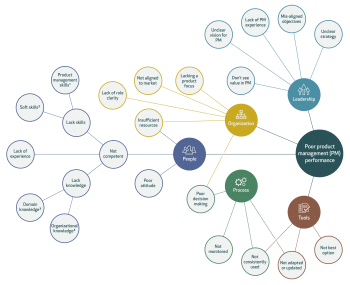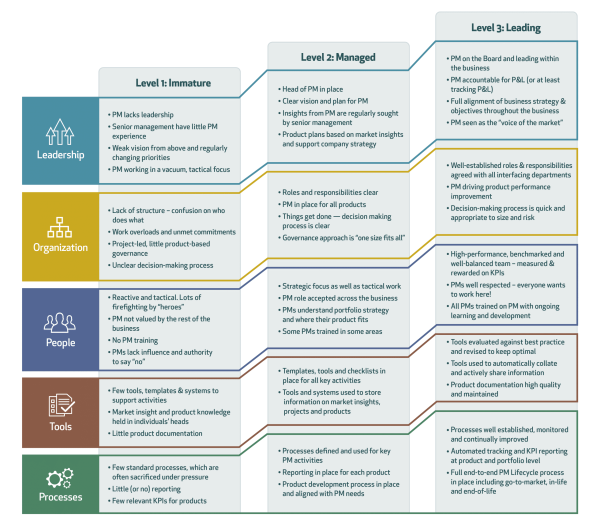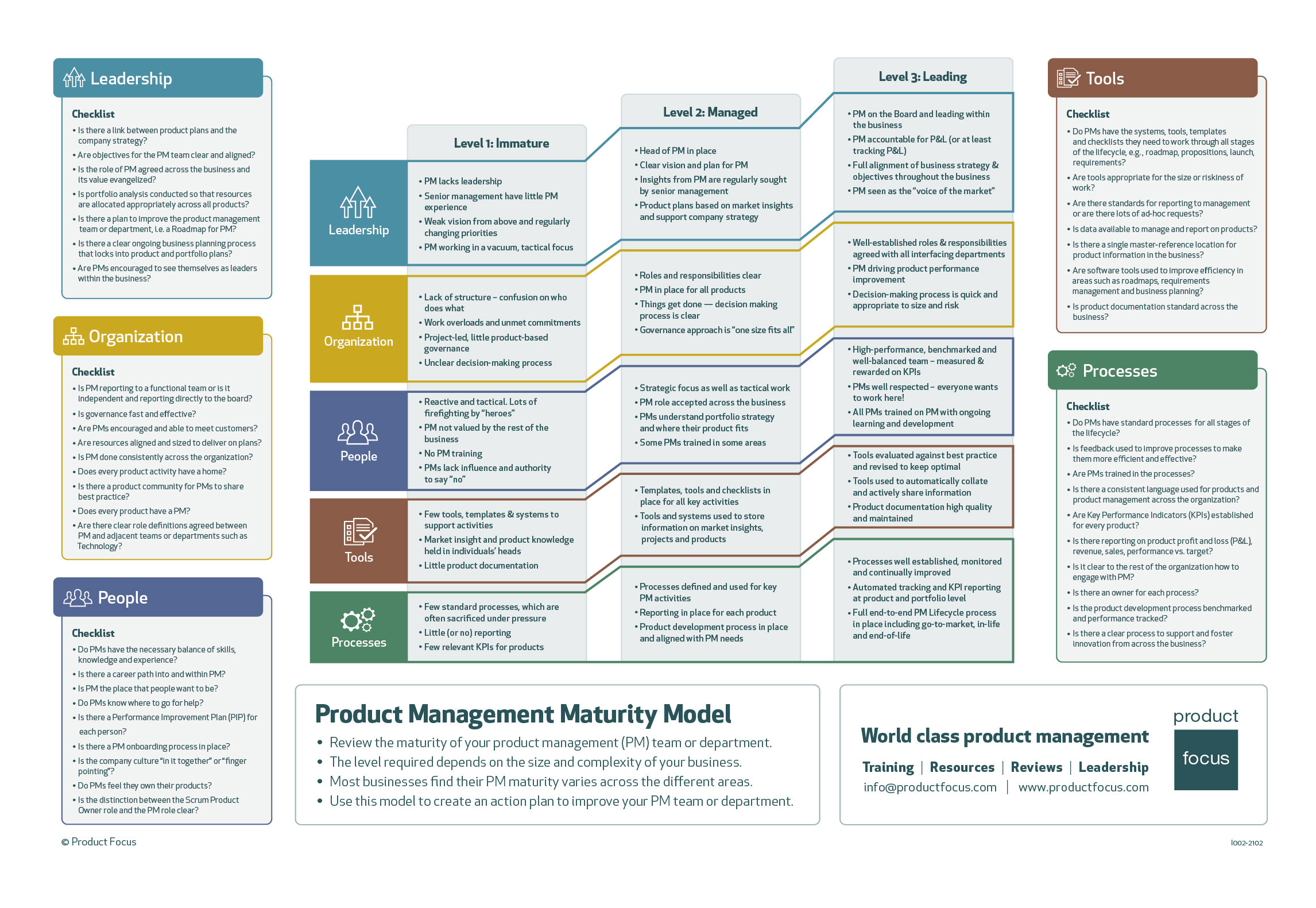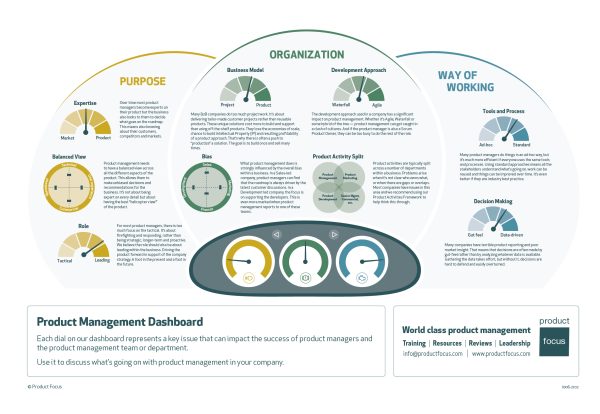
If you lead a product team, you will be busy. Usually very busy.
There will be ad-hoc demands from senior management; there will be urgent questions from your team; short-term crises to deal with; fires to put out; and important decisions that have to be made – apparently today!
Improving the performance of your product management function is something you know you should think about … but it’s tough to find the time. So, nothing happens until you get to a trigger point where something forces you to make a change.
Some triggers points that we’ve seen are:
- There is spiraling demand on your product team’s time – expectations are not being met, performance has dropped.
- You’re adding a new team of product people to your existing team after a merger or significant re-organization – they do things differently, and it’s causing problems.
- You’ve got a new boss who wants product management to become more strategic and leading – you’re not sure what that really means.
- Some of your best product people are quitting and you’re not sure why.
- You’ve come from another part of the business and you’re running product management for the first time – you’re not sure what to focus on first?
If you’re facing any of these situations, we sympathize!
More than that – we can give you some advice and tools to help you out.
Knowing what ‘good’ looks like
Many senior people you work with may only have a vague idea of what product management does. They don’t understand what ‘good’ looks like for a product management function. They see a product manager and think there’s someone who can fix my product problem.
One way to help you explain things is to describe the level of maturity of product management in your business. Our Product Management Maturity Model shows three levels of maturity (Ad-hoc, Managed, Leading) split across five areas – leadership, organization, people, and the tools and processes they use.

Product Management Maturity Model – click to open
The Maturity Model gives a structure to think about where you are now as a product team and where you want to be. You can download the infographic to work through the checklists to understand how you are doing.
Most businesses find that their level of maturity varies across the five different areas. Also, performance within a company will vary over time and across the business. In our reviews, we often find some pockets of excellence and other areas that are woefully deficient.
However, we do find this model is a useful tool as it moves the discussion on from talking about symptoms, e.g. late deliveries or poor product revenues, to looking at what the root causes might be of poor performance.
How to find the root cause(s) of poor performance
The diagram below uses the Maturity Model in a fishbone diagram to help you diagnose what might be causing poor product management performance. Working from right to left, you can use it to identify the root cause(s).
1 Roadmaps, Business Cases, Propositions, Plans, Pricing, Requirements, etc.
2 Communications, leadership, stakeholder management, influencing, political
3 Products, customers, markets, technology, competitors, suppliers
4 Processes, structure, contacts, governance
What are the typical issues you will face?
We know from our industry survey that the top three issues that product managers have are:
- Limited resources, including time, people, budgets, and tools
- Distracted on operational firefighting activities, leaving little time for strategic work
- Difficult prioritization decisions to make, often with incomplete information or no frameworks
So, you will likely need to grapple with some or all of these. If you are affected by the first one, you may want to look at our Product Activities Framework. It shows all the product management activities that should be going on in a company with products. It’s an excellent tool to help you clarify who does what in any product-based business.
Start with an audit
You may think you know all the problems already, but spending time to talk to the different stakeholders and any existing product people is critical. It helps build relationships, shows you care, and you will probably learn things that you didn’t already know.
Another helpful tool to use when discussing the key issues impacting the success of a product function is our Product Management Dashboard. It looks at three critical areas – the purpose of product management in the business, key organizational challenges and ways of working.
Product Management Dashboard – click to open
For example, if the team is doing too much firefighting, then you can describe the pointer on the Role dial as being too far to the left, i.e. there is too much tactical work. If there is confusion on what the different roles should do, you can use the Product Activity Split to highlight the point. If product management is being done in different ways across the business, you can say the Tools and Process Dial is too far to the left (ad-hoc).
Selling the value of product management
Whatever your situation, you need to be selling the value of product management within the business. This will give you the necessary buy-in and ‘wiggle-room’ from senior stakeholders to make the changes required.
A resource that can help you do this is our white paper ‘Product Management as a leadership role’. It outlines a journey that you may already be on as a business. To begin with, product management is a mess, and the story describes what happens to change into a world-class product management function. It’s full of arguments and ideas that you can use with your senior management.
A roadmap for product management
One way of describing your plans for improving product management is to talk about ‘a roadmap for product management’. It’s a nice way of presenting the things you need to change or put in place for the team. It may include a re-organization, training, improving key processes, a portfolio analysis exercise, or clarifying roles. Our Product Management Reviews can help you identify what to do or why not attend our Leading Product Management course.
Final thoughts
Whether you are one of the lucky few with time to focus on how to develop and grow your team or one of those faced with the need to change through a trigger point; these tools are an effective way to think about the problems, engage your team and wider business, and implement value-adding and effective change.
Leadership can be a lonely place, so if you need some help at one of these critical points in time why not get in touch.
Ian Lunn
Director, Product Focus





Leave a comment